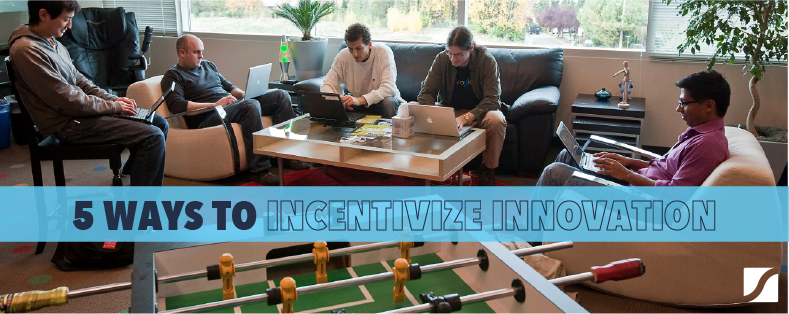5 Ways To Incentivize Innovation From P&G, 3M, Google, and more


People often ask me how to incentivize entrepreneurial behavior from within an established organization.
My first answer is “stop killing it.”
Leaders put so many barriers and shut doors in front of would-be internal entrepreneurs that just lifting a few barriers or leaving a few doors ajar would on their own create a momentous acceleration in their flow of innovation.
But still people want to know how to pay people to innovate. So, I’ve been talking to experts and reading cases, and I believe there are five effective ways to incentivize employees to innovate. They fall across a spectrum.
1. Celebrate employees' efforts to innovate
The least expensive form is to celebrate innovative behavior and, in particular, celebrate failure. Innovations are likely to fail and unless you shift perceived failure into a sense of progress, innovation will peter out. Procter & Gamble offers “failure awards,” for example, for internal heroes who tried and learned. Columbia professor Rita Gunther McGrath advises to see failure as the “cost of the learning.”
2. Give them time to realize their ideas
The famous “20% rule” that companies like 3M and Google have adopted – which encourages employees to spend 20% of their time innovating – is now well known yet so rarely emulated despite its clear success.
PPG, a $15b leader of surface finishing technology (think the paint on your car, the anti-rust film over that critical part in the airplane I am in right now as I write), gives its internal innovators 10-15% of their time to explore new ideas. They are asked to visit universities, connect with professors, and rally around solving new company-wide challenges.
3. Give them upside
Decades ago it was common practice for companies to give employees a share of the financial benefit for ideas they came up with. An employee might submit an improvement to the process. If the company implemented the recommendation, it would pay the employee a percentage of cost savings.
The father of one of our clients was an engineer at GM during the 1960s and made more money from his idea submissions than his own salary. UBS, the Swiss bank, in the 1980s had a similar policy and found that their summer interns, who made little in salary, were able to put together an attractive summer income by simply submitting improvement ideas.
Unfortunately, for a reason I cannot yet understand, corporations have recessed in this area. Few companies pay for ideas anymore.
4. Fire them
When your corporate structure proves too rigid to allow ideas to flow, you might consider letting them go … for a while.
For decades this was Cisco’s approach. When employees came up with new business ideas that the company was not able to embrace, they essentially let employees break off on their own to start businesses that Cisco would then later acquire at a premium. The risk of this approach is that your innovators may never return.
When Oracle let an executive quit to start a new company, and even gave him seed money to do so (or at least Oracle’s CEO did personally), Marc Benioff went on to build Salesforce.com, which never returned home and became an aggressive, independent competitor. In recent years Cisco has changed its approach, figuring out how to unlock the internal flow of innovation. They are now better at giving internal innovators the space to grow ideas from within.
5. Enable side projects
Google has gone one step further than providing 20% of employee time to innovate. The company has adopted policies making it easier for employees to launch side projects of their own. They have even created an internal incubator to help employees get new businesses off the ground.
Sometimes these employees leave and sometimes they continue the new ventures internally. Even founders Sergey Brin and Larry Page have incubated their own new business ideas through the program. The risk here is that it may create conflicts of interest.
Anthony Levandowski, the former Google engineer at the center of a public battle with Google that was sparked by him leaving the company to lead Uber’s driverless car project, launched several side projects while at Google. It appears Google was aware of some of his ventures and allowed him to continue pursuing them, provided they didn’t conflict with Google’s interests or Anthony’s job.
The ones that got him into trouble relate to a company he seemed never to tell Google about. He established and built a component that was incorporated into Google cars. He established an office an hour south of Google’s campus, hired employees, and after work would drive down for late-night meetings. Few people knew he was actually selling product, through a middleman, into his employer.
Conclusion
So there you have them – five proven ways to incentivize innovative behavior among your employees.
If you were looking for a silver bullet here – an elegant simple incentive program that would fit neatly into your current policies and procedures – and you do not see one, you are not alone. You see, the barrier to incentivizing innovative behavior is not knowing what to do, it is having the conviction to do it.




